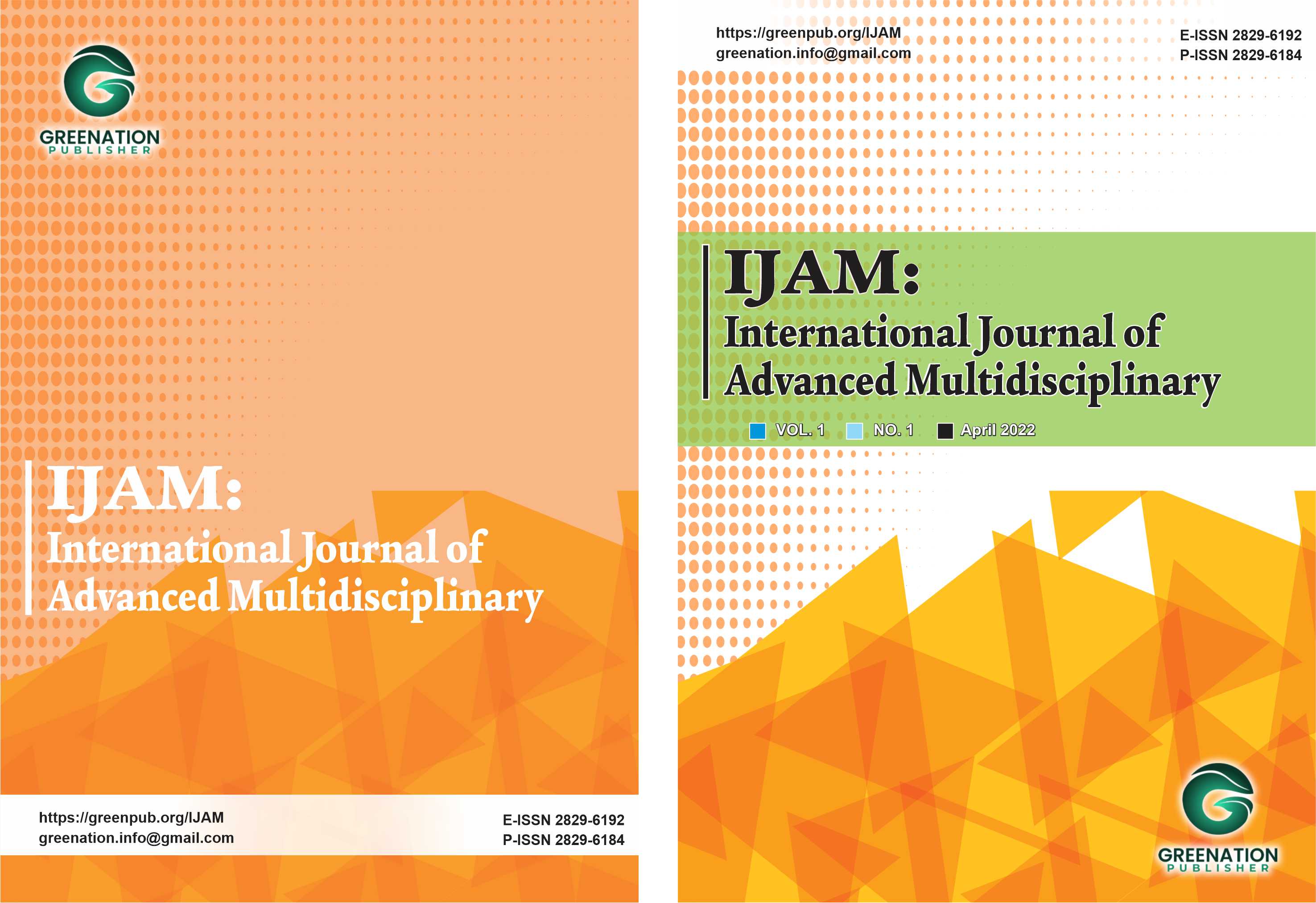Can the State Protect Minority Investors From Tyranny of the Family Shareholders? (A Corporate Governance Comparison Between Indonesia and Korea)
DOI:
https://doi.org/10.38035/ijam.v3i2.645Keywords:
path dependence, corporate governance, 1997 Asian Financial CrisisAbstract
In the aftermath of the 1997 Asian Financial Crisis that hit both Indonesia and Korea, both countries’ government saw the needs for revisiting and revitalizing its corporate governance. This case is particularly important given the dominance of family shareholders, both in the form of conglomerates in Indonesia and Chaebol in Korea. This paper aims to analyze the historical trajectory of the corporate governance framework development in both Indonesia and Korea. Based on that research objective, this study finds that despite the fact that both countries were developing the standard according to the latest global norms at the time, the presence of specific business situations and cases in each country forced each country to tailor their corporate governance framework accordingly. These divergent trajectories thus created corporate governance frameworks that are unique for both Indonesia and Korea.
References
Ahmadjian, C. L., & Song, J. (2004). Corporate governance reform in Japan and South Korea: Two paths of globalization.Almeida, H., Park, S. Y., Subrahmanyam, M. G., & Wolfenzon, D. (2011). The structure and formation of business groups: Evidence from Korean chaebols. Journal of Financial Economics, 99(2), 447-475.
Baek, J. S., Kang, J. K., & Park, K. S. (2004). Corporate governance and firm value: Evidence from the Korean financial crisis. Journal of Financial economics, 71(2), 265-313.
Berger, P. G., & Ofek, E. (1995). Diversification's effect on firm value. Journal of financial economics, 37(1), 39-65.
Choe, H., & Lee, B. S. (2003). Korean bank governance reform after the Asian financial crisis. Pacific-Basin Finance Journal, 11(4), 483-508.
Christiningrum, M. F. (2015). Effect of Diversification Strategy, Leverage and IOS on Multi Segment Corporate Performance in Indonesia. Mediterranean Journal of Social Sciences, 6(5 S5), 157.
Claessens, S., Djankov, S., & Lang, L. H. (1999). Who Controls East Asian Corporations? (Vol. 2054). World Bank Publications.
Dick, H. & Mulholland, J. (2018). Old money: Indonesia beyond cronyism https://indonesiaatmelbourne.unimelb.edu.au/old-money-indonesia-beyond-cronyism/
Gulalp, H. (1987). Capital accumulation, classes and the relative autonomy of the state. Science & Society, 287-313.
Heclo H. (1974). Modern social politics in britain and sweden; from relief to income maintenance. Yale University Press.
Heo, U., Jeon, H., Kim, H., & Kim, O. (2008). The political economy of South Korea: economic growth, democratization, and financial crisis. Maryland Series in Contemporary Asian Studies, 2008(2), 1.
Jensen, M.C. & Meckling, W.H. (1976) Theory of the Firm: Managerial Behavior, Agency Costs and Ownership Structure. Journal of Financial Economics, 3, 305-360.
Kim & Chang. Recent Trends Following KCC Amendment to Strengthen Minority Shareholder Rights - https://www.kimchang.com/en/insights/detail.kc?sch_section=4&idx=22883
Kim, E. H., & Kim, W. (2009). 10. Changes in Korean Corporate Governance: A Response to Crisis. In Global Corporate Governance (pp. 196-215). Columbia University Press.
Kim, S. I., & Shin, H. (2021). The Relationship between Ownership Control Disparity and Firm Value: Empirical Evidence from High-Technology Firms in Korea. The Journal of Asian Finance, Economics and Business, 8(5), 749-759.
La Porta, R., Lopez?de?Silanes, F., & Shleifer, A. (1999). Corporate ownership around the world. The journal of finance, 54(2), 471-517.
Lim, T. (2012). Illusions of Neoliberalization: The dual nature of the reform of the Bank of Korea since the economic crisis of 1997. Globalizations, 9(5), 681-694.
Min, B. S. (2016). Corporate governance reform: the case of Korea. Asian Journal of Political Science, 24(1), 21-41.Prianto, A.L. (2011). Good Governance dan Formasi Kebijakan Publik Neo-Liberal.
Moskalev, S., & Park, S. C. (2010). South Korean chaebols and value-based management. Journal of business ethics, 92(1), 49-62.
Park, J. H., Kim, C., Chang, Y. K., Lee, D. H., & Sung, Y. D. (2018). CEO hubris and firm performance: Exploring the moderating roles of CEO power and board vigilance. Journal of Business Ethics, 147(4), 919-933.
Poulantzas, N. (1973). On social classes. New Left Review, (78), 27.
RAHAYU, E. S. (2018). MEKANISME CORPORATE GOVERNANCE DAN EKSPROPRIASI PEMEGANG SAHAM MINORITAS DI INDONESIA (Studi Empiris Pada Perusahaan Non-Keuangan yang Terdaftar pada Indeks LQ 45 DI BEI PERIODE 2014-2017) (Doctoral dissertation, Universitas Airlangga).
Sadli, M. (2008). The Indonesian Crisis. Economics and Finance in Indonesia, 56(1), 97-110.
Scott, K. (1998). The role of corporate governance in South Korean economic reform. Journal of Applied Corporate Finance, 10(4), 8-15.
Setyahadi, R. R., & Narsa, I. (2020). Corporate governance and sustainability in Indonesia. The Journal of Asian Finance, Economics and Business, 7(12), 885-894.
Shin, Inseok. (2003). Financial Sector Restructuring in Korea. International Forum on Economic Reforms in Korea and Implications for Japanese Economy. Economic and Social Research Institute, Cabinet Office, Government of Japan.
Skocpol, T. (1985). Bringing the State Back In: Strategies of Analysis in Current Research. In P. Evans, D. Rueschemeyer, & T. Skocpol (Eds.), Bringing the State Back In (pp. 3-38). Cambridge: Cambridge University Press. doi:10.1017/CBO9780511628283.002
Solo, R. (1978). The neo-Marxist theory of the state. Journal of Economic Issues, 12(4), 829-842.
Sridana, I. K., Budiartha, I. N. P., & Seputra, I. P. G. (2020). Perlindungan Hukum Terhadap Pemegang Saham Minoritas Pada Perseroan Terbatas Yang Melakukan Merger. Jurnal Analogi Hukum, 2(1), 59-62.
Stepan, A. (1979). The United States and Latin America: Vital interests and the instruments of power. Foreign Aff., 58, 659.
Tarmidi, L. T. (2003). Krisis moneter Indonesia: Sebab, dampak, peran IMF dan saran. Bulletin of Monetary Economics and Banking, 1(4), 1-25.
Wallis, J., & Dollery, B. (1999). Market failure and government intervention. In Market Failure, Government Failure, Leadership and Public Policy (pp. 9-31). Palgrave Macmillan, London.
Winters, J. A. (2013). Oligarchy and democracy in Indonesia. Indonesia, (96), 11-33.
World Bank: GDP Growth (annual %). https://data.worldbank.org/indicator/NY.GDP.MKTP.KD.ZG?locations=KR-ID. Accessed December 16, 2022.
Yanagimachi, I. (2004). Chaebol reform and corporate governance in Korea. Policy and governance working paper series, 18.
Ziegenhain, P. (2008). The Indonesian legislature and its impact on democratic consolidation. In Democratization in Post-Suharto Indonesia (pp. 53-72). Routledge.
Downloads
Published
How to Cite
Issue
Section
License
Copyright (c) 2024 MF Christiningrum, A. Aryo Wisnuwardhana

This work is licensed under a Creative Commons Attribution 4.0 International License.
Authors who publish their manuscripts in this journal agree to the following conditions:
- The copyright on each article belongs to the author(s).
- The author acknowledges that the International Journal of Advanced Multidisciplinary (IJAM) has the right to be the first to publish with a Creative Commons Attribution 4.0 International license (Attribution 4.0 International (CC BY 4.0).
- Authors can submit articles separately, arrange for the non-exclusive distribution of manuscripts that have been published in this journal into other versions (e.g., sent to the author's institutional repository, publication into books, etc.), by acknowledging that the manuscript has been published for the first time in the International Journal of Advanced Multidisciplinary (IJAM).























